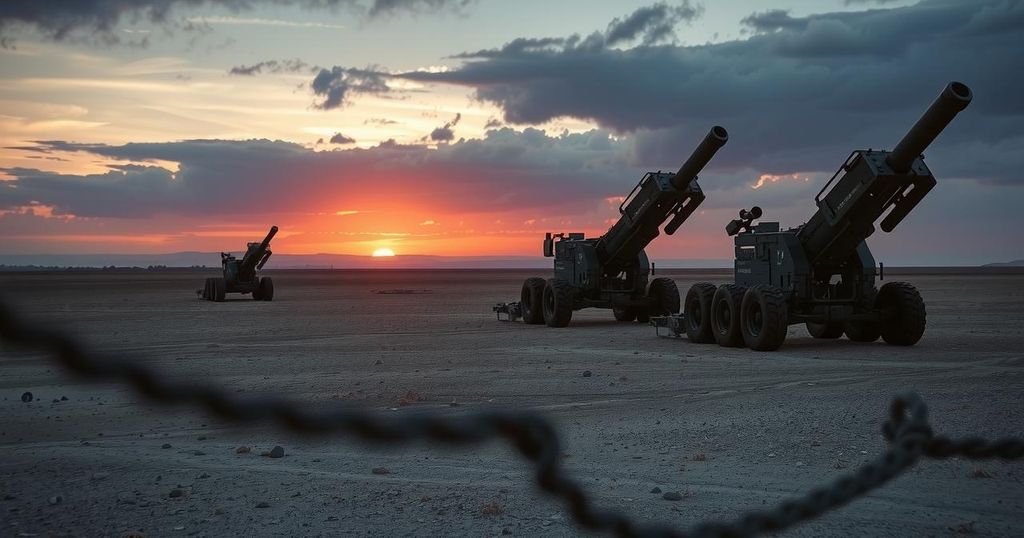Ukraine Engages North Korean Artillery in Kursk, Signaling Military Collaboration
Ukraine successfully struck three North Korean artillery guns in Russia’s Kursk, highlighting North Korea’s critical role in supporting Russian military operations. Employed to counter artillery losses, the M-1978 Koksan howitzers represent a substantial escalation in the conflict, as approximately 12,000 North Korean soldiers are reportedly aiding Russian forces. This collaboration underscores the deepening defense ties between North Korea and Russia post their mutual treaty in June.
In a recent announcement, Ukraine reported it successfully struck three artillery guns in Russia’s Kursk region, which were supplied by North Korea. This incident highlights North Korea’s significant involvement in bolstering Russian military efforts against Ukraine.
The Ukrainian military, via its 14th Separate Drone Regiment, identified the North Korean M-1978 howitzers concealed among trees. They coordinated an attack using Ukrainian rocket artillery, emphasizing the capabilities of this weapon system. The M-1978 Koksan, North Korea’s longest-range artillery, features a 170 mm gun with a firing range of up to 60 kilometers.
Originally designed to target Seoul from the north, the artillery system is now employed by Russian forces to mitigate their artillery losses in Ukraine. Furthermore, reports indicate that approximately 12,000 North Korean soldiers are presently in Russia to support military operations against Ukrainian forces in the occupied areas of Kursk, although neither country has confirmed this information.
Evidence continues to emerge regarding North Korea’s provision of military equipment to Russia, aimed at compensating for losses sustained in the ongoing conflict. For instance, in February, Ukraine claimed to have hit another North Korean self-propelled howitzer in Luhansk.
Previously unreported sightings in December indicated a formation equipped with North Korean artillery in Russia’s Tyumen region, featuring ten modernized Koksan howitzers. South Korea’s intelligence in October also revealed that North Korea had sent approximately 7,000 weapon containers to Russia recently, raising the total to 20,000.
Recent reports from The Washington Post highlight that a significant influx of North Korean troops, alongside air superiority, allowed Russian forces to regain control over Sudzha, Ukraine’s last stronghold in Kursk. This reliance on North Korea underscores Russia’s determination to reclaim territory lost during Ukraine’s counteroffensive.
Since signing a mutual defense treaty in June, relations between North Korea and Russia have strengthened across various sectors. A recent meeting last week saw a Russian delegation, led by Deputy Foreign Minister Andrey Rudenko, engage with key North Korean officials, presumably discussing defense cooperation regarding troop deployment amid ongoing ceasefire discussions proposed by the United States.
The recent revelation of Ukraine striking North Korean artillery in Russia’s Kursk signifies a concerning military alliance that could impact the dynamics of the ongoing conflict. North Korea’s involvement, highlighted by the deployment of thousands of soldiers and substantial artillery support, reflects the deepening ties between Pyongyang and Moscow. This development marks a pivotal moment for the region, requiring keen observation from global stakeholders to address potential escalations in hostilities.
Original Source: www.rfa.org




Post Comment